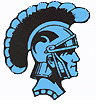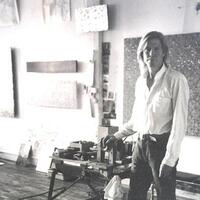
 |
||

Last Updated on 10/02/21 By Tom Prefling
David Henry Smith, artist, passed away Thursday, March 11, 2021 at his adobe home in the remote Datil/Sawtooth mountains of New Mexico, where he had for a decade worked on softly sculpting the land. He had become an expert at making adobe bricks, even teaching the skill at Ghost Ranch in New Mexico. He built his home with materials he made himself on a site 27 miles from any pavement and completely off the grid. The cause of death is still undecided. He was 70 years old. David was born in Portland, Oregon June 20, 1950 and moved to Tucson, Arizona when he was 5 (they moved for the comfort of his mother’s polio muscles) - where he met his lifelong best friend, Tom Daily in pre-school. David graduated from Catalina High School, class of ‘68 in Tucson. He and Tom both enlisted in the military after high school. David served a tour of duty in the United States Marines in Vietnam, 1968-1970. After Vietnam, David attended his father’s alma mater, Reed College for a year. While at Reed he lived with Uncle Dunny (of “The Children’s Doctor” fame) and Aunt Julie and their 5 children. David graduated from Pomona College in 1976 with a degree in Art, moved to New York City and worked on the first animated light board at One Times Square called Spectacolor. The hand pulling up the skyline of New York City was one of his light board designs that was used to open the “Saturday Night Live” TV show for many years. He set up a similar light board in Kuwait around this time and spent time in Saudi Arabia, Italy and Sweden. In 1983, one of his nephews, Joshua Lackey lived with him while attending Stuyvesant High School. David was courting Claire Pentecost that year. David and his then-wife Claire Pentecost both won the prestigious art prize of a Whitney in New York. David was the only man in his platoon to come back alive from Vietnam. He featured each of his platoon members in an art show of sand paintings that blew up stochasticly as one toured the art show. Another show was of war shirts for each man in his platoon made of the hides of animals he hunted himself with tools he handmade; an adz, an axe, bow and arrows. He was known as a world-class tracker. “Every animal has enough brains to tan its own hide,” he used to say. He became one of the better known artists of the Vietnam era, with showings at the Whitney Museum and representation by the P.P.O.W. Gallery. After his divorce, David moved to Milford, Pennsylvania where he applied his substantial artistic talents to renovating a 13 bedroom home he and friends planned to turn into an Artist’s Colony. Because the property was forested, he learned large scale forest conservation. This led to a nomination to serve in the Peace Corps in Ecuador in South America, where he was a founder of Ecomadera, (see website) - a rainforest balsa-processing facility that today provides employment for 100 residents of Cristobal, Colon in the province of Esmeraldas and thereby reduced the amount of illegal logging that was destroying the rain forest. Besides Spanish he also spoke Russian. After finishing his five or so years of Peace Corps service in South America he returned to his native Tucson, Arizona to help care for his aging parents for two years. He taught science in a junior high school during this time and also worked with troubled teens in an outward bound program. At some point he also did a short stint with a geo-surveying team in the deserts of Arizona. He was also the search and rescue person for southern Arizona spelunkers; he loved the sport, (although one time he, his father and Joshua got lost themselves in a cave for about 6 hours.) His mother died in 2007 and David moved in with his dad to care for his 89 year old father the last year of that parent’s life. He and his dad both loved studying the native backyard birds. At his place in New Mexico David was very fond of the ravens and fed them cat food. The ravens kept him company when he made Adobe brick or listened to NPR outside by the campfire pit each day. Biofeedback Therapy for PTSD should be mentioned. While at Pomona, David worked with a biofeedback machine and while in New York he went to a psychotherapist. (She finally died of old age without coming up with a cure for PTSD.) From college on, David studied lucid dreaming. He went to Hawaii for lucid dreaming seminars every few years and even introduced grand-niece Ivey to lucid dreaming in Hawaii. Another favorite life-long activity was the Sauna - Finnish steam bath. (His mother’s first language was Finnish.) After he settled his parent’s estate he started work on another Art Colony in one of the most remote and beautiful areas of New Mexico. Always a voracious reader, he filled his adobe cabin with books of all sorts - mysteries mostly, as well as technical non-fiction. David then returned to government service for a few years when he accepted a position in USAID where he was deployed to the province of Ghor, Afghanistan to lead reconstruction teams. He worked with Russian and Japanese diplomats there and had the Lithuanian army as bodyguards. One of his projects involved a canal across many villages; another was setting up a home for unmarried pregnant girls. David Henry Smith was born on June 20, 1950 to David Turner Smith and Opal Naomi Hendricksen Smith in Portland, Oregon. In Tucson, the David T. Smith Science Center was named after his father. His mother was the first woman President of the YMCA and National Vice President of Church Women United. David is survived by his sister, Kristen Michaels and brother-in-law, Eric Schaveland (who helped him build his adobe structures) of Bellvue, Colorado, nephews, Joshua Lackey and Colin Michael, nieces, Rebecca Woodruff and Elizabeth Newberry, his ex-wife, the artist Claire Pentecost of Chicago, Illinois and by his girlfriend, of 30 years, Victoria Moore of Colorado Springs, Colorado. There will be a memorial service to spread his ashes on his property on his birthday this year. |